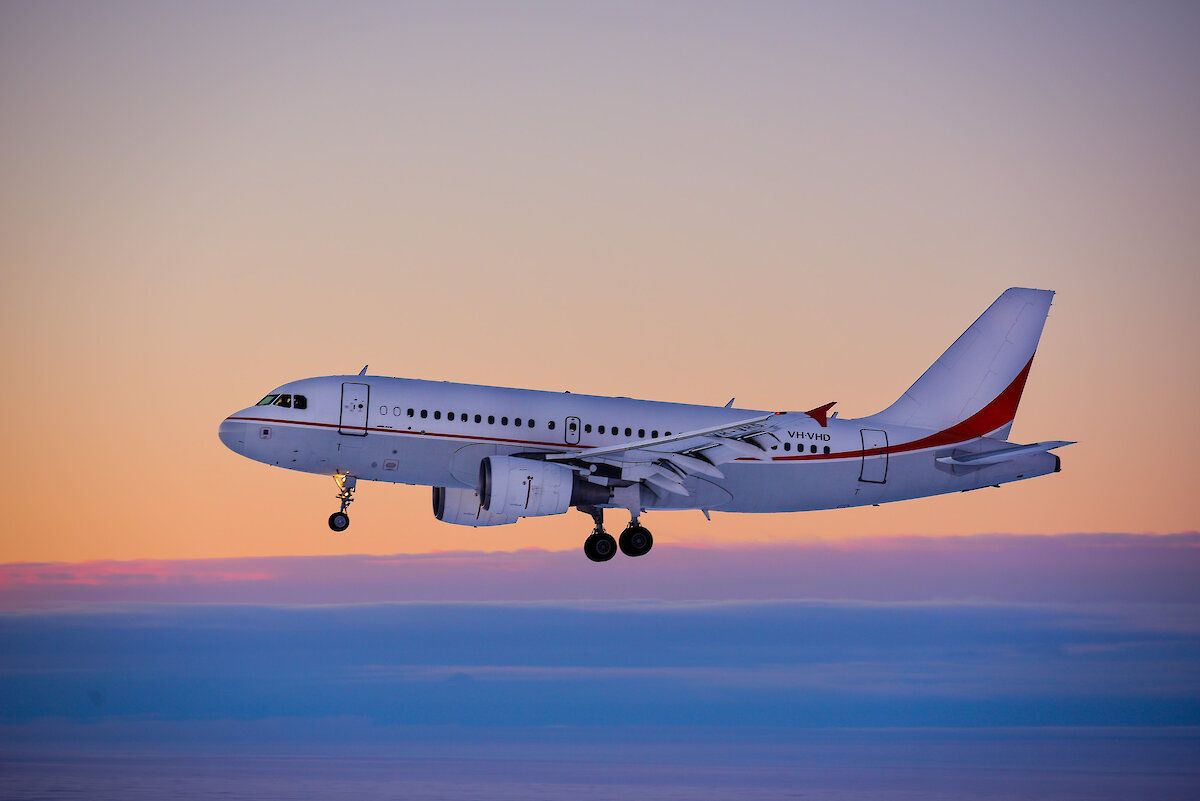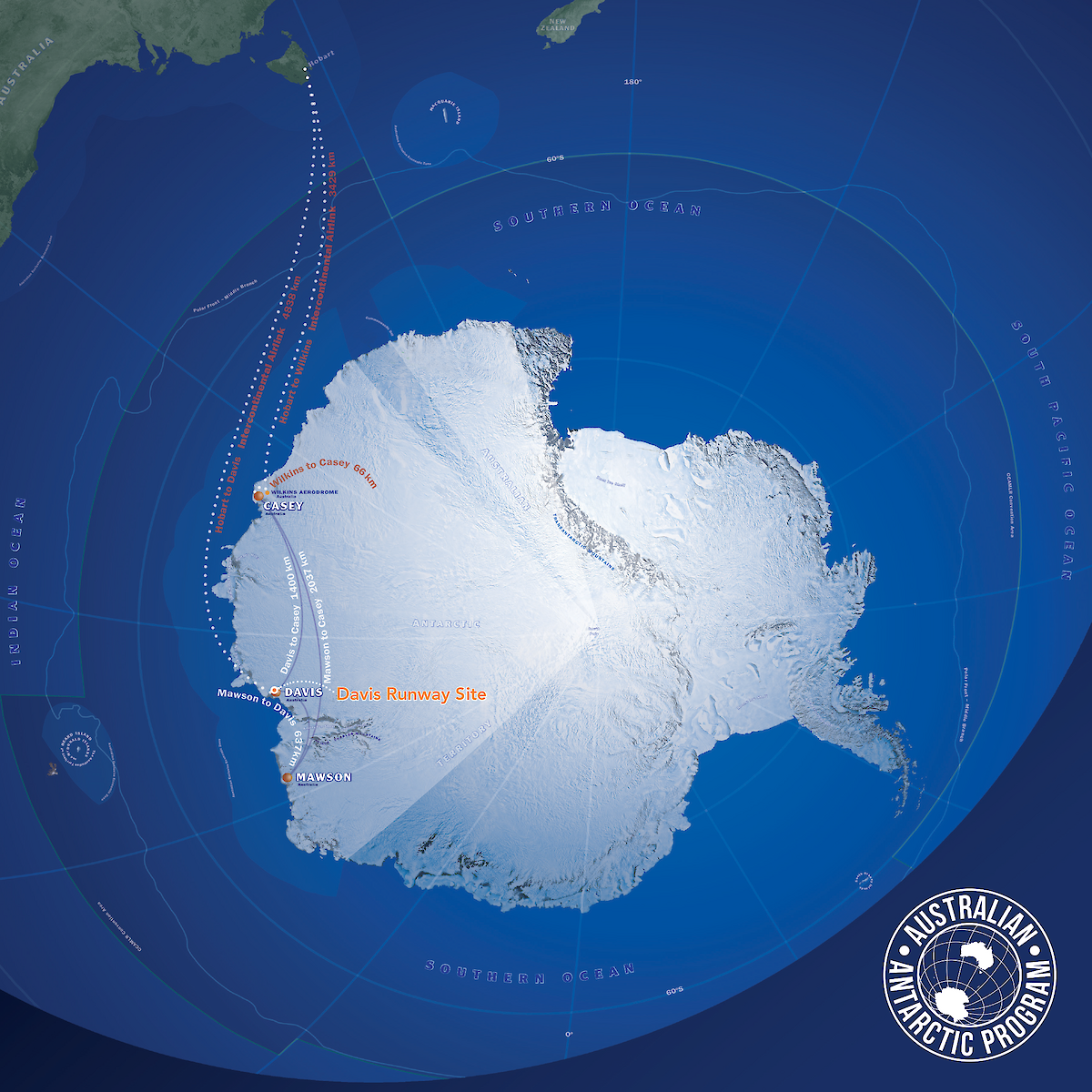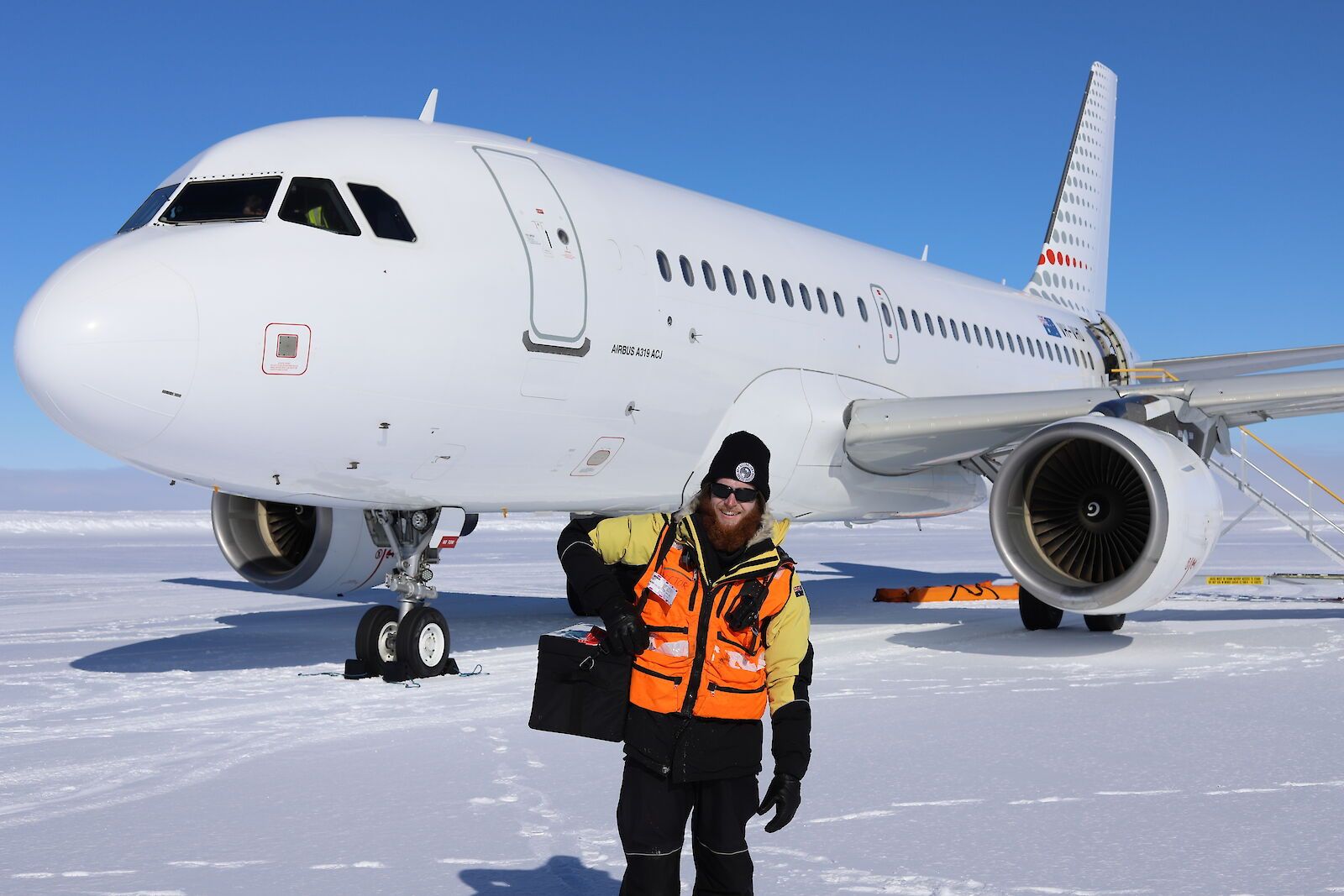Australia has quietly dropped plans to build a 2,700-meter paved runway in Antarctica, citing environmental concerns. But it's clear the cost, complexity, and long construction timeline also influenced the decision. It means that Australia, which has the biggest territorial claims on the seventh continent, will continue to rely on the blue-ice summer-only runway at Wilkins Station.
Paved runway project quietly dropped
The axing of the runway project isn't new news, but the low-level announcement meant it largely slipped under the radar. Plans for the paved runway surfaced in 2018 when the Australian government launched a technical feasibility study, environmental impact studies, and a cost-benefit analysis.
Prefabricated concrete pavers would have been shipped in to construct the 45-meter wide runway that was to be located in an ice-free region of Antarctica near Australia’s Davis Station. The runway would have accommodated Royal Australia Air Force C-17 Globemasters and other long-range flights.
Specialist cold-climate airline SkyTraders presently provides the air link between Australia's southernmost major airport, Hobart, and Antarctica. Its Airbus A319-100 flies down to the Wilkins ice runway in summer - around a four-hour flight. Outside the summer season, Australia's Antarctic bases are largely cut-off.
Environmental & economic considerations kill Antarctica's paved runway project
Year-round access wasn't the only reason behind the paved runway project. Increasing interest in the coldest continent from other countries, including China, and some chit-chat about mining and exploiting the Antarctic's natural resources, gave the runway project a geopolitical edge.
But before Christmas last year, the Australian Government quietly dropped the project. "The Morrison Government will protect Antarctica’s pristine wilderness by not proceeding with a decision to build a 2700m concrete runway at Australia’s Davis research station, following a detailed environmental and economic assessment," a statement on the Australian Antarctic Program's website says.
“Over the last five years the Government has thoroughly researched the runway option in a way that has greatly increased our understanding of this unique terrestrial and marine environment, which will help inform our future investment," said Environment Minister Susan Ley.
“It is now clear that higher projected costs, potential environmental impacts, and the complexity of a 20-year construction process in an extreme and sensitive environment, are such that we will now focus on alternative options for expanding our wider Antarctic Program capability."
A multi-billion-dollar bill and a two-decade timeframe hinder the case for a paved runway
It is around 3,000 miles (4,800 kilometers) from Hobart down to Davis base, which is located in the Vestfold Hills on the coast of the Cooperation Sea. The scientific base is manned year-round. It has a "ski way" that ski-equipped turboprops such as DHC-6 Twin Otters can land on to connect to the bigger ice runway at Wilkins base. It is widely acknowledged the paved runway project would have been a hugely ambitious scheme. Everything would need to be shipped in from Hobart at great expense and taking considerable time.
Stay informed: Sign up for our daily and weekly aviation news digests.
On the ground, an enormous amount of earthworks and engineering work would have been undertaken before that first runway paver was craned into place. Aside from the two-decade timeline, the cost would have run into the many billions.
The decision has split Antarctica watchers. Some applaud the decision not to despoil the continent any further. Others say dropping the paved runway project is a serious geopolitical error and will only increase Chinese interest and activity in Antarctica.
Instead, Australia is investing in its Antarctic shipping fleet, including state-of-the-art RSV Nuyina now based in Hobart. These ships aren't cheap, but they are cheaper than the paved runway and come online far quicker. The runway decision also maps out (and constrains) Australia's aviation activity in the Antarctic for the next several decades.



